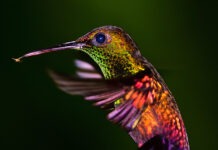Much to humans’ chagrin, bacteria have superior survival skills. Their decision-making processes and collective behaviors allow them to thrive and even spread efficiently in difficult environments.
Now researchers at Tel Aviv University have developed a computational model that better explains how bacteria move in a swarm — and this model can be applied to human-made technologies, including computers, artificial intelligence, and robotics. Ph.D. student Adi Shklarsh — with her supervisor Prof. Eshel Ben-Jacob of TAU’s Sackler School of Physics and Astronomy, Gil Ariel from Bar Ilan University and Elad Schneidman from the Weizmann Institute of Science — has discovered how bacteria collectively gather information about their environment and find an optimal path to growth, even in the most complex terrains.
Studying the principles of bacteria navigation will allow researchers to design a new generation of smart robots that can form intelligent swarms, aid in the development of medical micro-robots used to diagnose or distribute medications in the body, or “de-code” systems used in social networks and throughout the Internet to gather information on consumer behaviors. The research was recently published in PLoS Computational Biology.
Read the article “Smart Swarms of Bacteria-Inspired Agents with Performance Adaptable Interactions”
Watch Prof. Ben-Eshel’s lecture “Learning from Bacteria about Social Networks”
Source: The above story is reprinted from materials (edited for content and length) provided by American Friends of Tel Aviv University. For more biology and evolution news from AFTAU, click here.

















